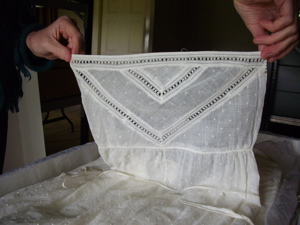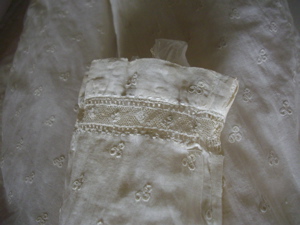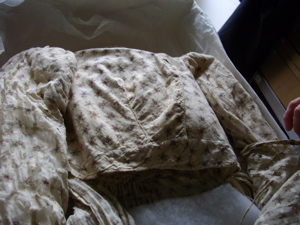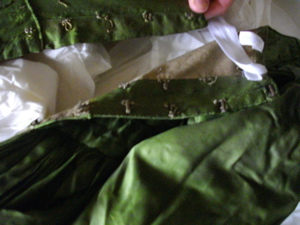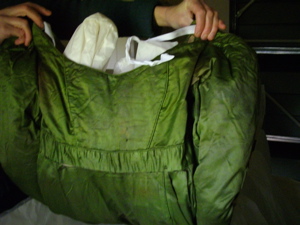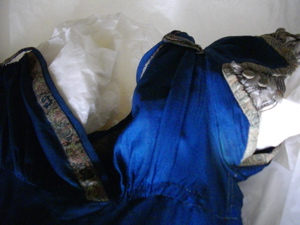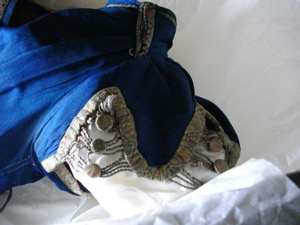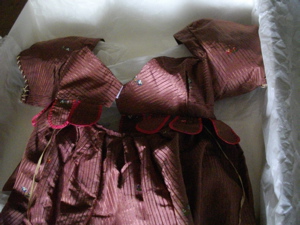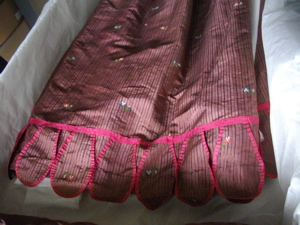
COSTUME PAGE ~ part 1
(I'll put
part 2 up in a month or so)
Here are some photos I took at Berrington Hall, in Herefordshire,
where regency historical author Joanna
Maitland had arranged a private regency-era costume showing by wonderful
costume curator, Althea. Thank you both for your generosity. It's a fabulous
collection, but it's not on display to the public, so I felt very privileged.
You'll notice some photos are a little dark — that's because the
fabric and embroidery are 200 years old, and delicate and light will damage
them. All photos were taken without a flash and in the natural light of
just one small window. Any errors in description are wholly my own fault.
Althea explained it all, but my notes were mental -- I was too busy taking
photos and trying not to drool over the costumes.
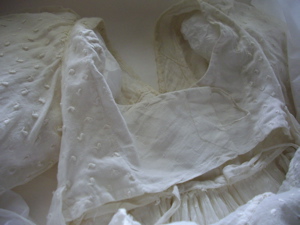 |
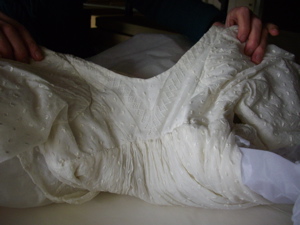 |
|
|
I became fascinated by the way
bodices were constructed. They were not nearly as secure as I'd
imagined!
|
The back detail of the dresses was beautiful, I suppose, because hair was worn off the neck, and they wanted to frame the nape. |
|
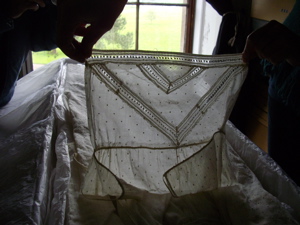 Two folds of material were pulled across the breasts and held together with pins — ordinary, straight pins. You can see the folds above. The part Althea is holding is a third piece of fabric that comes up over the breasts, presenting a smooth facade to the world. Again, it's fastened with plain straight pins. |
You can see how fine this muslin is. This is the front flap -- the bit everyone saw as the bodice of the dress. |
|
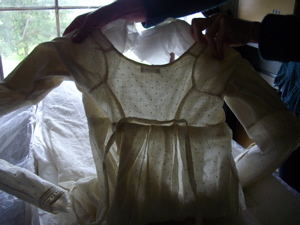 This shows some detail of the back of the same fine muslin dress. |
|
|
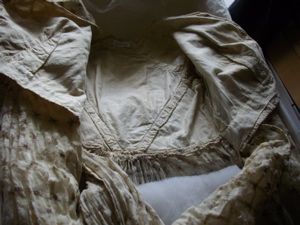 Here is another dress showing the front fastening system. This is with all the front flaps folded open, so you can see the inside back of the dress. This one is fastened with tapes as well as pins |
|
|
Below you can see the bib lying, not yet lifted up and fastened. Fascinating,
isn't it?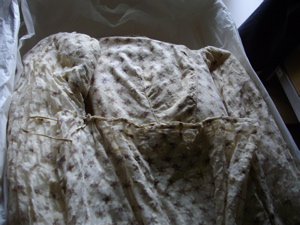 |
This
shows the fastening of a gorgeous green pelisse (see below) with
metal hooks and eyes. |
|
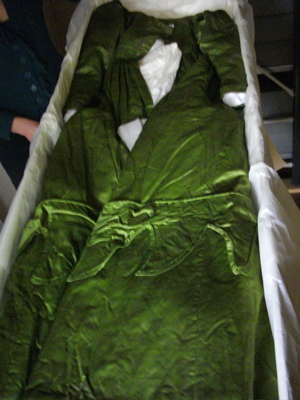 |
Above is the back view of the pelisse. On the left is the whole thing, lying in tissue paper in its box. Stunning, isn't it? I wonder if this is the color Georgette Heyer called "pomona green" - The Grand Sophy's favorite color. |
|
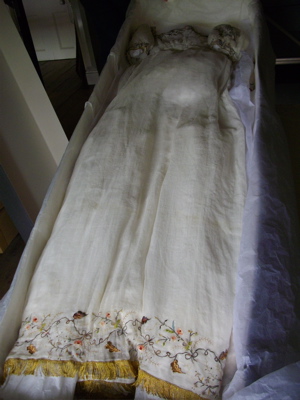 |
The
dress on the left is of fine muslin, exquisitely embroidered around
the very minimal bodice and much larger hem (below) and and finished
with gold fringing. When you think that this dress was worn by a young
woman 200 years ago, it's a miracle it's survived in such beautiful
order.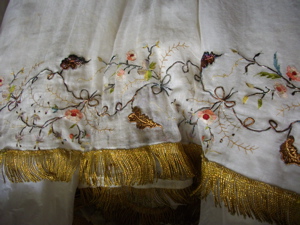 |
|
|
This
lovely blue gown has silver embroidered braidwork around the neck
and intricate detail on the capped sleeves. |
All of this embroidered braid and
detailed work is hand done, of course. I loved these dramatic little
sleeves. |
|
| I
wasn't so taken with the color combination or style of this dress
(below) but believe me it was very fashionable then. It's a good reminder
of how tastes in colors change. Many of the bright clear, lovely colors
we take for granted were simply not available then.
|
The
bright pink-edged loops were a feature of the bodice and hem, and
the sleeves were large and puffed and fastened separately over the
sleeve edge -- you can see the rough finishing (left sleeve) and
the separate puffed sleeve (right sleeve) clearly in the picture
on the left. More about puffed sleeves on the next page (to come) |
|
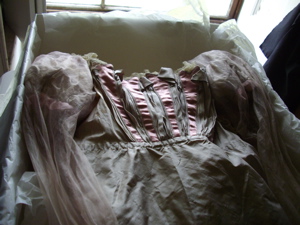 |
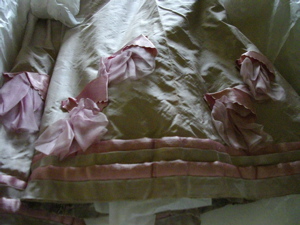 |
|
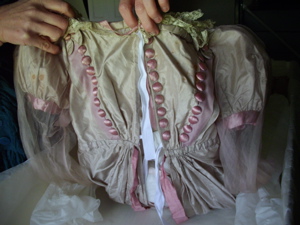 |
This pink and pale green dress was some young woman's favorite party dress I'm sure. I loved it because it reminded me of my favorite party dress when I was about 7. I called it "my bows" and it had big pink satin bows around the skirt, just like this one. The photo on the left shows the lovely detailing of the back with rows of satin-covered buttons. These are just some of the photos I took at Berrington Hall. I have enough for another page, at least, and I'll put them up in a month or so. |
![]()
home
| books | about
Anne | about writing
guestbook | mailbox
| links | contact
